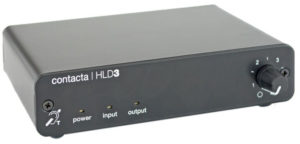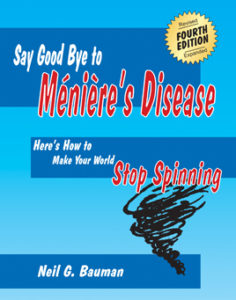by Neil Bauman, Ph.D.
A lady asked:
How does the hybrid cochlear implant work better than hearing aids?
Interesting question, or perhaps I should say, interesting answer coming up.
Actually, the hybrid cochlear implant is a misnomer. It really should be called the short-electrode cochlear implant. A hybrid implies that two different things are being married together, and this is not what happens with the short-electrode cochlear implant.
Since, in this case, you would wear BOTH a cochlear implant (CI) and a hearing aid in the same ear, this is not really a hybrid device. The only thing that is truly hybrid, would be the resulting hearing—half from the cochlear implant, and half though the hearing aid, or via natural hearing.
I have heard talk of marrying a short-electrode cochlear implant and a hearing aid together to form a true hybrid—but that is something for the future. In fact, even the short-electrode CIs are still in trials, and are not yet available to the general public.
Now let’s look at why a short-electrode CI would give you better sound than a hearing aid.
Hearing aids can only help you when you have significant numbers of working hair cells for each frequency being amplified. Most people with a hearing loss have relatively good low-frequency hearing and little or no high-frequency hearing.
If such a person were to wear a hearing aid, the hearing aid would amplify the lower frequency sounds very well, but would not really help much, or at all, in the higher frequencies. This is because in this case most/all of the hair cells in the higher frequencies have died off. Since it is the job of the hair cells to insert the sound signal into the auditory nerve, if there are no working hair cells, then no signal gets passed to the auditory nerve, and you don’t hear anything in that frequency.
The result is that no matter how much your hearing aid amplifies any high-frequency sounds, you still won’t be able to hear them.
This is where cochlear implants come in. They bypass these dead hair cells and “inject” the sound signal directly into the auditory nerve—thus your brain hears these sounds in spite of the dead hair cells.
So for a person with a ski-slope hearing loss (meaning they hear some/much low-frequency sounds and little or no high- frequency sounds), a cochlear implant for the high frequencies and a hearing aid for the low frequencies is theoretically an ideal solution. This is the niche that the hybrid or short-electrode CI is being designed to fill.
In order to understand a bit better why this works, we need a bit more understanding of how the cochlea works. The cochlea is a snail-shaped organ. Hair cells are arranged along the length from the base (large end) of the cochlea to the apex (small end). The hair cells near the base are stimulated by high frequency sounds and the ones closer to the apex are stimulated by low-frequency sounds.
When they insert the electrodes of the CI into the cochlea, some damage occurs to the existing hair cells, thus destroying some (or all) of your residual hearing. If they used normal-length electrodes, they would damage/destroy your relatively good low-frequency hearing.
Thus they have designed a short electrode that only penetrates a short distance from the base of the cochlea where high frequency sounds are picked up (and where most of the hair cells are already dead), and leaves undamaged the upper portions that is still working quite well for low-frequency sounds.
As a result, by wearing a short-electrode cochlear implant, you would hear the high-frequency sounds. At the same time, you would wear a hearing aid to amplify the lower frequency sounds and bring them up to normal levels. (If your low-frequency hearing is still good enough, you wouldn’t even have to wear a hearing aid.)
The beauty of this combination is that it leaves your lower-frequency hearing working normally (with amplification from a hearing aid if necessary). Thus, you will still get the full richness of lower frequency sounds so you can hear, understand and appreciate music for example.
Unfortunately, with today’s technology, the cochlear implant, while a miracle device, doesn’t give the richness to sound that lets us enjoy music to the fullest. This is because a cochlear implant has somewhere between 24 and 128 electrodes to cover the whole frequency spectrum as opposed to many thousand hair cells in the normal ear.
Think of the difference you’d hear if you tried to play a piano where someone had yanked out 6 or 7 of the 8 keys in every octave. That is analogous to what you would hear via a CI as opposed to normal hearing.
If you can’t hear anything (e.g. in the high frequencies), then hearing via the CI, imperfect as it is, is much better than not hearing anything at all in those frequencies.
This is why wearing a short-electrode CI and a conventional hearing aid would give you the best of both worlds if you have a severe ski-slope hearing loss.
Note: if your hearing is stable, the short-electrode CI is a great choice. However, if your low-frequency hearing is continually dropping, you might be better off getting a conventional CI from the start. Otherwise, when your low-frequency hearing drops to a low level, you will have to have the short-electrode array surgically removed and replaced with a standard-length CI electrode array.


